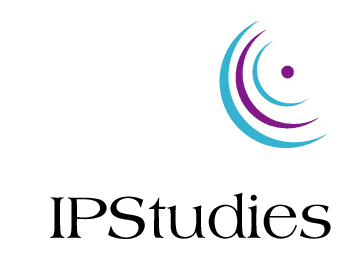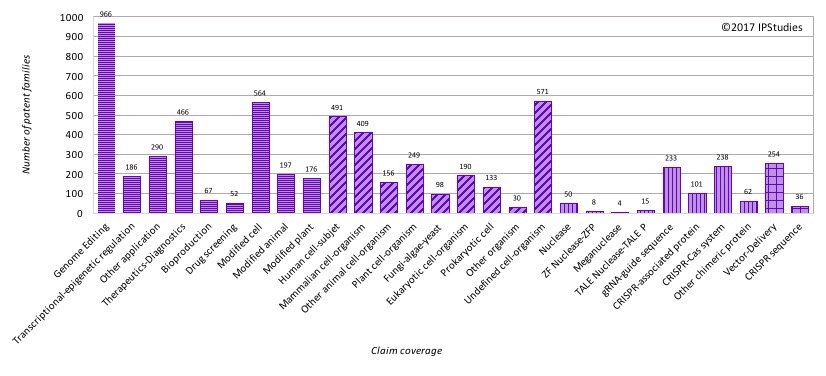Emmanuelle Charpentier and Jennifer Doudna just received a few hours ago the Nobel prize in Chemistry 2020 for “the development of a method of genome editing”, namely their 2012 discovery of the CRISPR/Cas9 genetic scissors which basically enables to “cut and paste” DNA. This scientific discovery has fueled an unprecedented biotechnology development in the past 8 years. When we started to analyze the genome editing patent landscape in Spring 2014, there were only 96 patent families(*) in our records in relation with CRISPR. We have now more than 7400 in our latest records – and adding an average of 200 more every month in 2020. What does this data tell us on who has taken advantage in engineering new life sciences solutions out of this amazing scientific discovery, now confirmed worth a Nobel Prize?
Continue readingCategory: Patent surveys
Myths and realities on DuPont CRISPR assets
On the agriculture side, IAM just published this week some basic quantitative data analytics spotting DuPont as the leader in CRISPR patent assets. The IAM interview also highlighted some questions about the licensing position of DuPont in the CRISPR patent battle. This was quite surprising to read for us as this information has been publicly known since 2014 and regularly compiled in both our patent and licensing landscapes. Let’s take a closer scrutiny into the DuPont CRISPR assets. In our monitoring of licensing data since 2014, we have actually spotted DuPont Pioneer as one of the earliest player to position their licensing-in in a very strategic way:
June 2017 – Acceleration of the CRISPR patent landscape growth
Three years ago, we finalized our first CRISPR patent landscape analysis, at that time combined with an analysis of the TALE patent landscape which was then significantly larger. There were only 90 CRISPR patent families in this early analysis… that is less than the whole set of new CRISPR patent publications in the past single month: 116 additional patent families in our latest CRISPR patent analytics data set.
May 2017 – CRISPR update
The CRISPR patent landscape keeps on steadily growing, with an additional 70 patent publications last month. We have now monitored more than 1400 patent families in our latest CRISPR patent analytics data set. In the past few weeks, our patent landscape data was quoted in the WIPO magazine coverage of CRISPR, while our expert Fabien Palazzoli had the opportunity to present his latest findings at the Cell Line Development and Engineering conference in Amsterdam and to Deftech in Switzerland.
April 2017 – CRISPR update
The CRISPR patent landscape kept on developing since February with more than 100 new patent publications in the past two months. We have now searched, reviewed and categorized 1340 patent families in our latest CRISPR patent analytics data set. Continue reading
Recent developments in the CRISPR patent landscape
The CRISPR patent landscape keeps on developing with now an average of two new patent publications every day. We have now searched, reviewed and categorized 1198 patent families in our February 2016 CRISPR patent analytics data set. The recent conclusions by the USPTO on the CRISPR pioneering patent interference has received significant media attention and finally confirmed the diversity of the CRISPR licensing landscape. We have provided our 2017 key findings to a number of analysts in the field, and are working hard to keep on extracting and sorting meaningful CRISPR patent coverage information for our customers on a monthly basis.
The IPStudies 2017 CRISPR patent landscape is out, don’t miss it!
The CRISPR patent landscape keeps on developing at an increasing pace in 2017, with now up to three new patent families published every day! We have searched, reviewed and categorized more than 1146 patent families, now surveyed in our just released 2017 CRISPR patent landscape report.
Will the CRISPR patent landscape soon move to a one-stop license shopping?
The past 24 hours have brought new light and significant moves in the complex CRISPR patent landscape.
First (that was in European time zone!), our CRISPR expert Fabien Palazzoli celebrated the 1000th CRISPR patent family extraction out of the worldwide published patent databases. Our next monthly update will actually feature more than 1050 classified and categorized CRISPR patent families – more than 10 times the initial set of our first landscape release back in summer 2014!
CRISPR patent analytics monthly update
The CRISPR patent landscape keeps on developing with in average a new patent publication every day. We have now searched, reviewed and categorized more than 850 patent families in our CRISPR patent analytics database.
More CRISPR interfering inventors may come from Vilnius
Earlier this month, we were interviewed by The Scientist regarding the side inventorship dispute between Feng Zhang and Luciano Marraffini on some of the Broad patent applications. Public registers at the USPTO, WIPO and the EPO expose further details of the otherwise un-publicized legal battles for invention ownership between their employers (the Broad Institute of Harvard and MIT and Rockfeller University), back from the 2012-2013 early filings.

